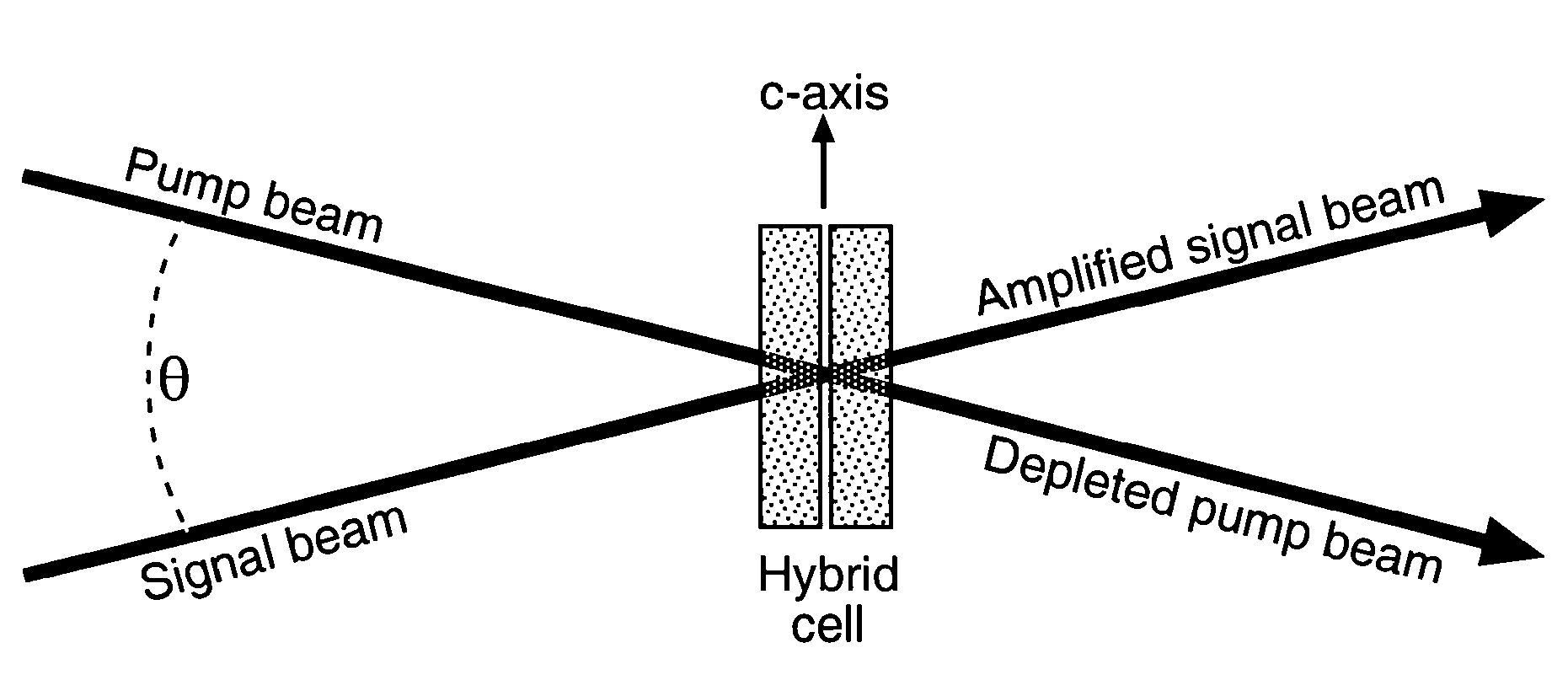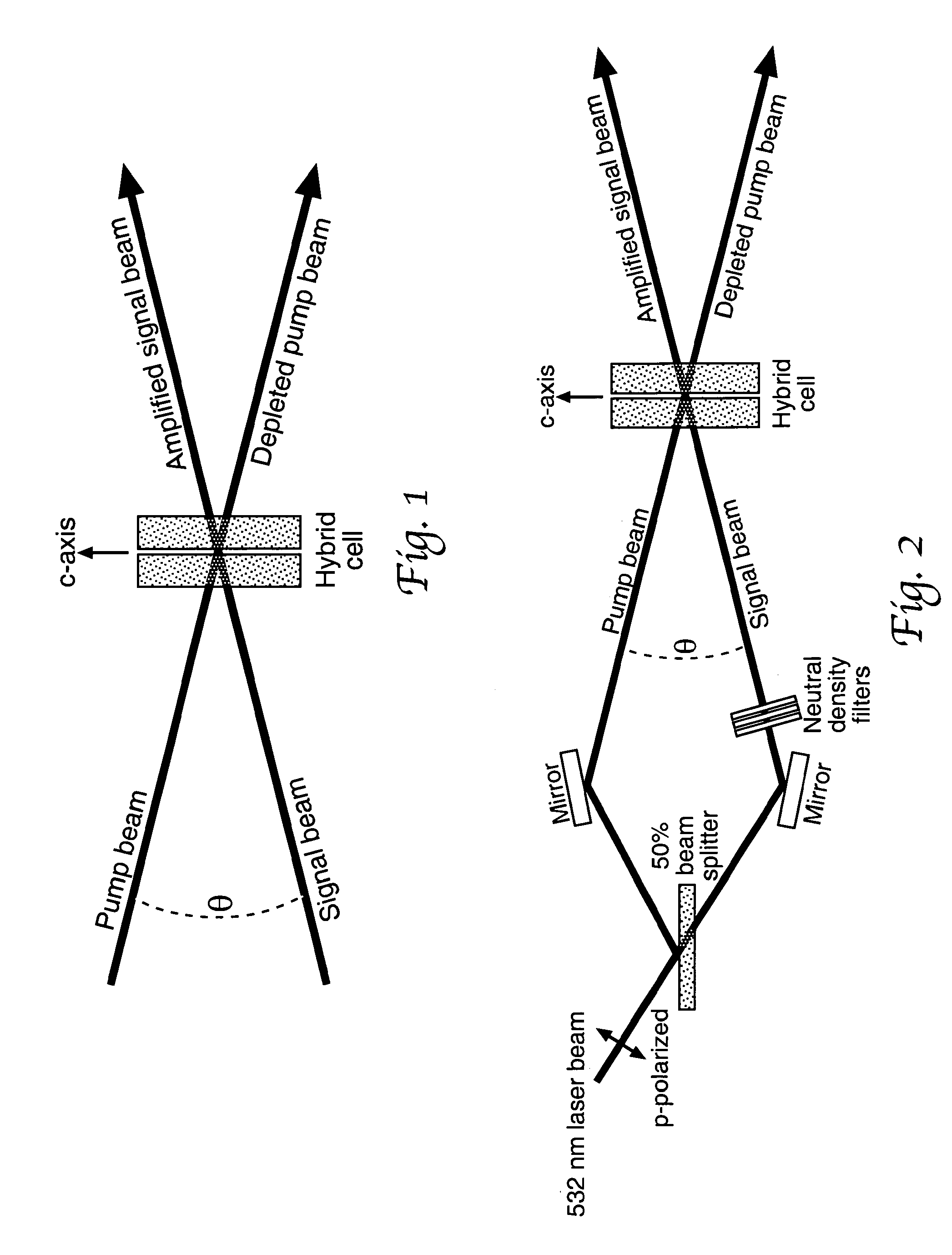Nanoparticle doped hybrid photoreactives
a hybrid photorefractive and nanoparticle technology, applied in the direction of active medium materials, semiconductor lasers, instruments, etc., can solve the problems of limited potential benefits of hybrid photorefractive technology, unidirectional beam coupling, etc., and achieve speed and photorefractive beam coupling, sensitivity, birefringence, and pronounced effect on gain characteristics
- Summary
- Abstract
- Description
- Claims
- Application Information
AI Technical Summary
Benefits of technology
Problems solved by technology
Method used
Image
Examples
Embodiment Construction
[0017]Referring to FIG. 1, a photorefractive hybrid cell of the present invention is illustrated. The hybrid cell includes one or more windows and one or more media doped with nanoparticles. The windows may be any known photorefractive material and / or any material that forms a space-charge field from charge migration arising from either diffusion and / or drift in the form of bulk or epitaxial thin film materials. Examples of window materials may include, but are not limited to, strontium barium niobate doped cerium (Ce:SBN), photonic crystal, doped or undoped semiconductors, doped or undoped SPS, doped BaTi03, doped KNb03, or any other space-charge field forming material known in the art.
[0018]Placed adjacent to the window is the nanoparticle-doped media. The media may be any material having refractive index properties that depend on an electric or magnetic field. Such materials may be either intrinsically electro-optic (e.g. linear or quadratic Pockel's Effect materials, Kerr type m...
PUM
| Property | Measurement | Unit |
|---|---|---|
| size | aaaaa | aaaaa |
| size | aaaaa | aaaaa |
| size | aaaaa | aaaaa |
Abstract
Description
Claims
Application Information
 Login to View More
Login to View More - R&D
- Intellectual Property
- Life Sciences
- Materials
- Tech Scout
- Unparalleled Data Quality
- Higher Quality Content
- 60% Fewer Hallucinations
Browse by: Latest US Patents, China's latest patents, Technical Efficacy Thesaurus, Application Domain, Technology Topic, Popular Technical Reports.
© 2025 PatSnap. All rights reserved.Legal|Privacy policy|Modern Slavery Act Transparency Statement|Sitemap|About US| Contact US: help@patsnap.com



